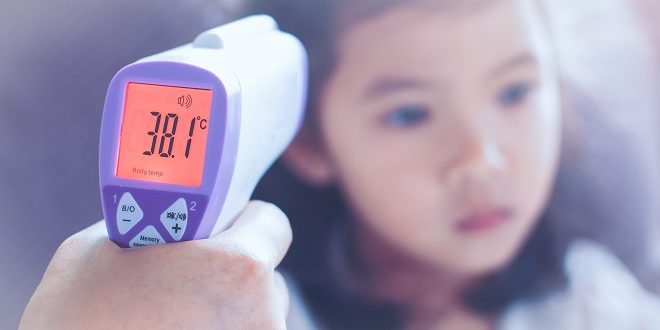Many industries are using infrared temperature sensors for temperature control and measurement. The sensors detect and measure the infrared radiation that an object emits, which is proportional to its temperature. This article will discuss the various infrared temperature sensor, their applications and how they work.
What is Infrared Temperature Sensors (ITS)?
Infrared temperature sensors can measure the temperature of objects without any physical contact. The sensors detect the amount of infrared radiation that is emitted from an object and convert it into a temperature reading. These sensors are useful in many industries such as automotive, food processing and HVAC.
Types of Infrared Temperature Sensitors
Two types of infrared temperature sensors are available: thermal imaging cameras and spot infrared thermometers.
Spot infrared thermometers can be handheld devices that measure temperature at a particular spot on an object. These thermometers are portable and compact, which makes them great for field applications. These sensors can be used in HVAC, automotive, or food processing applications.
The thermal imaging cameras capture temperature distributions of entire objects or scenes. These cameras provide visual representations of temperature variations. They can be used to identify hot spots, energy leaks and temperature gradients. These sensors are used in many industries, including electrical maintenance, building inspections, medical diagnosis, and other areas.
How do Infrared Temperature Sensors Work?
Infrared temperature sensors detect and measure the amount of infrared radiation that an object emits. Infrared radiation is emitted by all objects, and its amount is directly proportional with their temperature. Infrared temperature sensors sense this radiation and convert it to a temperature reading.
Infrared temperature sensors make use of a lens to focus infrared radiation onto the detector. The detector converts infrared radiation to an electrical signal. This is then used to determine the temperature. The quality of the detector and lens will determine the accuracy of the temperature reading.
Infrared Temperature Sensors: Applications
For temperature control and measurement purposes, infrared temperature sensors can be used in many industries. These are just a few of the many applications:
1. Processing Food: Infrared temperature sensor are used in food processing to determine the temperature of food products as they cook, bake, or freeze. These sensors ensure food safety and prevent food spoilage by ensuring that food is properly cooked or frozen.
2 Automotive: Infrared thermometers are used in automotive to monitor the temperature of various parts such as tires, brakes, engines and brakes. These sensors make sure that components function within the correct temperature range to prevent damage and improve performance.
3 HVAC. Infrared temperature sensor are used in HVAC to determine the temperature of HVAC equipment, pipes and air ducts. These sensors help to ensure that equipment operates within the desired temperature range. This improves energy efficiency and reduces energy costs.
4. Electrical Maintenance: To detect hot spots in electrical equipment, infrared temperature sensors can be used in the industry of electrical maintenance. These sensors detect temperature variations that aren’t visible to the naked eye and allow technicians to identify potential problems before they become serious.
Conclusion
The versatile infrared temperature sensor is used in many industries for temperature control and measurement. The sensors detect the amount of infrared radiation that an object emits and convert it into a temperature reading. There are two types of these sensors: thermal imaging cameras and spot infrared thermometers. Each type is unique and has its own applications. Many industries use infrared temperature sensors, such as automotive, food processing and HVAC. We can expect more innovative uses of these sensors as technology advances.
 Naa Songs
Naa Songs




